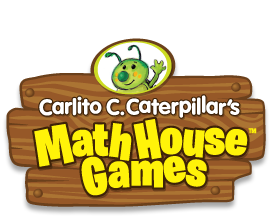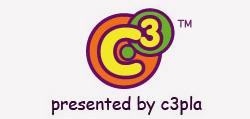Tips for Shaping Learning
|
Meghan McCarthy Welch Meghan has been a childcare professional since the age of twelve. Growing up in Atlanta, Georgia, she was often referred to as “the neighborhood babysitter.” Later, she used her skills as a source of income while earning her Bachelors Degree in Film and Television at the University of Notre Dame, and her Masters of Child Development from Erikson Institute. She is a young mother though she wrote this article in 2007. |
As parents we often feel inadequate when it comes to teaching our children, especially when it comes to math. That’s why it is best to approach the task as a play-sport with you as the coach. Children love to play games, after all, and you only need to provide focus and direction. Keep in mind that a teacher is a facilitator who provides opportunities and the proper environment for learning. The purpose of this program is to give you the necessary ‘tools’ to help facilitate your child’s learning success.
Tips for Shaping Learning
Use the following tips to best help your child achieve learning goals:
Introduce a concept as a situation that is relevant to the child. You can do this by beginning with a question that frames the problem. For example, suppose you are addressing the concept of associating a number with a set, you might create this scenario:
Since you’re having friends over on Saturday, how many boxes of crayons do we need to get if Katie, Alyssa, Luis, Alex, and Jack are coming over?Let the child do the heavy work. You are there to nudge and steer in the right direction not to solve the problem yourself. The hardest part of solving a problem is getting started. Allow some time for this. If the child is not getting anywhere, you might give a helpful hint. For example, as in the scenario above, you might suggest that your child draw a picture of herself and her five friends.
Allow your child to develop his/her own way of solving a problem. Each method of problem solving reflects one’s individualistic style of thinking. Becoming self-reliant promotes growth and development as well as confidence and creativity.
Downplay failure and praise success. At all times, be positive and believe in your child. Use problems or stumbling blocks as opportunities to teach children how to learn from mistakes.
Math All Around Us
Math-teaching opportunities present themselves everyday. In the car, on errands, around the house, and around the table, you can talk to your child in a manner that promotes mathematical thinking and analysis, yet seems like play. Starting with common occurrences derived from the child’s experiences, more complicated concepts will evolve as your child is given the tools to express awareness of numbers, patterns, and groups. Their language—and math language—is enriched as you relate to your child.
Sets and sequences may seem like complicated concepts for your child to grasp—but they are not. Children, who by nature thrive on routine, categorize instinctively what they see, hear, and touch. Voila! That’s what sets are all about! Providing everyday activities reinforced by math language links the child’s natural understanding of sets to the world of math.
Everyday Activities
Below are activities you can use to reinforce the concepts of sets and sequences.
Start easy. The simplest set of two is something that your child wears everyday. Point out to your child that socks (and shoes) are sets in themselves.
Simple questions. You can help your child to begin to organize people and things into groups by asking simple questions. For example: “How many red cars are in this lot?” “How many people with brown hair do you see?” “Look at how those kids are sitting – there’s a boy and then a girl and then a boy and then a girl. If we added another child to the row, who would come next?”
Kids are doers. Get your children involved in daily household chores. If folding laundry, make a game out of matching socks and challenge your child to see how many pairs he or she can find. You can strengthen number recognition by writing matching numbers on pairs with a laundry pen.
Table talk. As you gather the components for setting the dinner table—placemats, plates, forks, knives, and napkins—point out the individual groups that exist. Then set the table and show your child that each place setting is an individual set.
Load ‘em up! Have your child help you load kid-friendly items, such as plastic plates, bowls, cups, and ‘silverware’ into the dishwasher. Ask your child to group the dishes (plates in one area, silverware in another, etc.). Grouping further, show that a subset of silverware, spoons, can be grouped separately, for example.
Candy makes everything fun. Choose a variety of candy appropriate for your child’s age (be careful of choking!) and place on a table. Categorize the candy, find which piece doesn’t belong, or ask questions like “Are there more purple or yellow pieces?”
Grocery go-getter. At the grocery store, talk about the different sections, such as the fruits and vegetables section, the diary section, or the meat section. At home, have your child put the groceries in the refrigerator and sort them by type (i.e., vegetables, meat, fruits).
Toy room clean up. Have your child group together objects while cleaning up. For instance, find all the trucks, then all the cars, and, finally, put all the vehicles away.
Craft time. Pasta noodles and beads can make easy lessons of patterns and sequences. Make a necklace for Grandma that uses a definite pattern. Model and explain as you make one, too, using words like “sequence,” “pattern,” and “every-other.”
What’s my rule? To play this game have one child find something similar about the members of a group of people. For instance, everyone is wearing shorts. The “rule” can be as tricky as the child wants it to be. Then everyone else can take turns guessing the rule.



